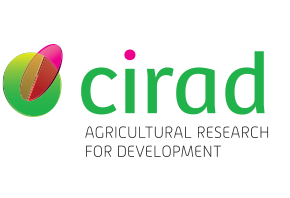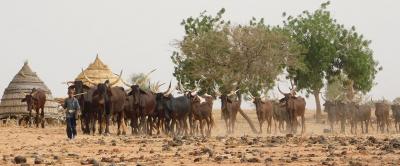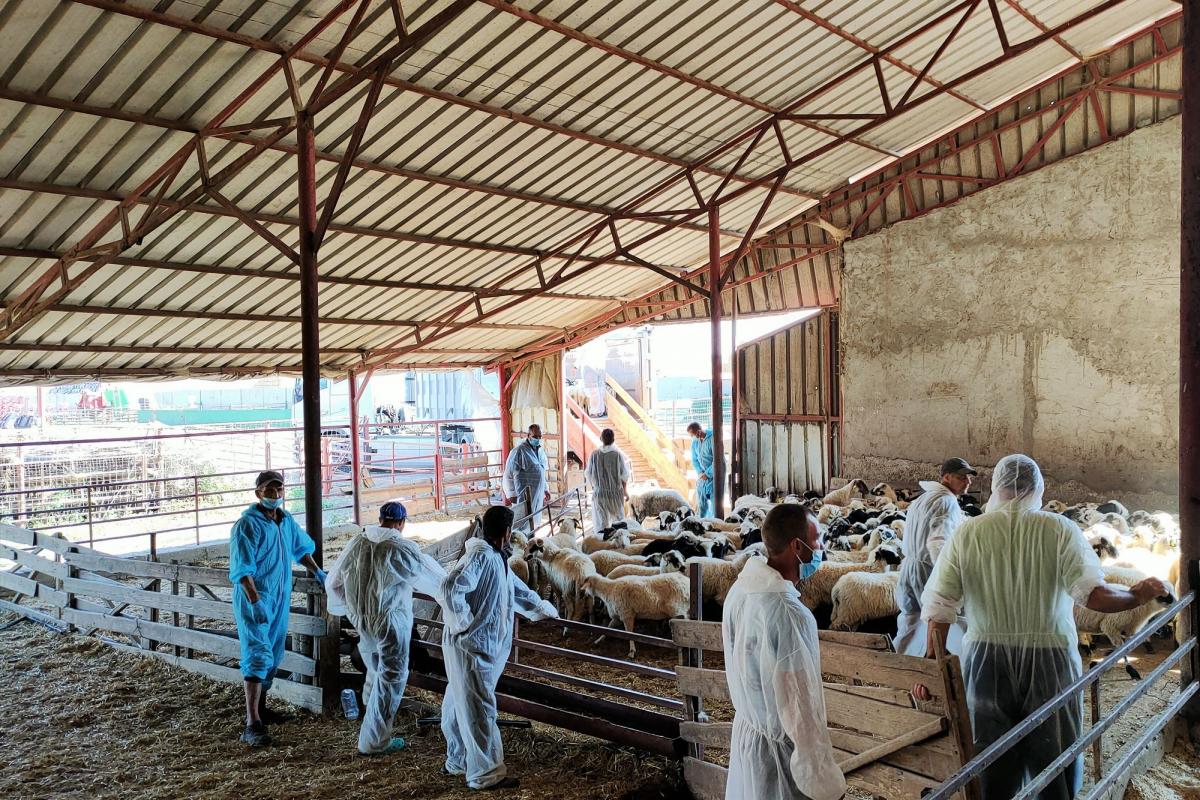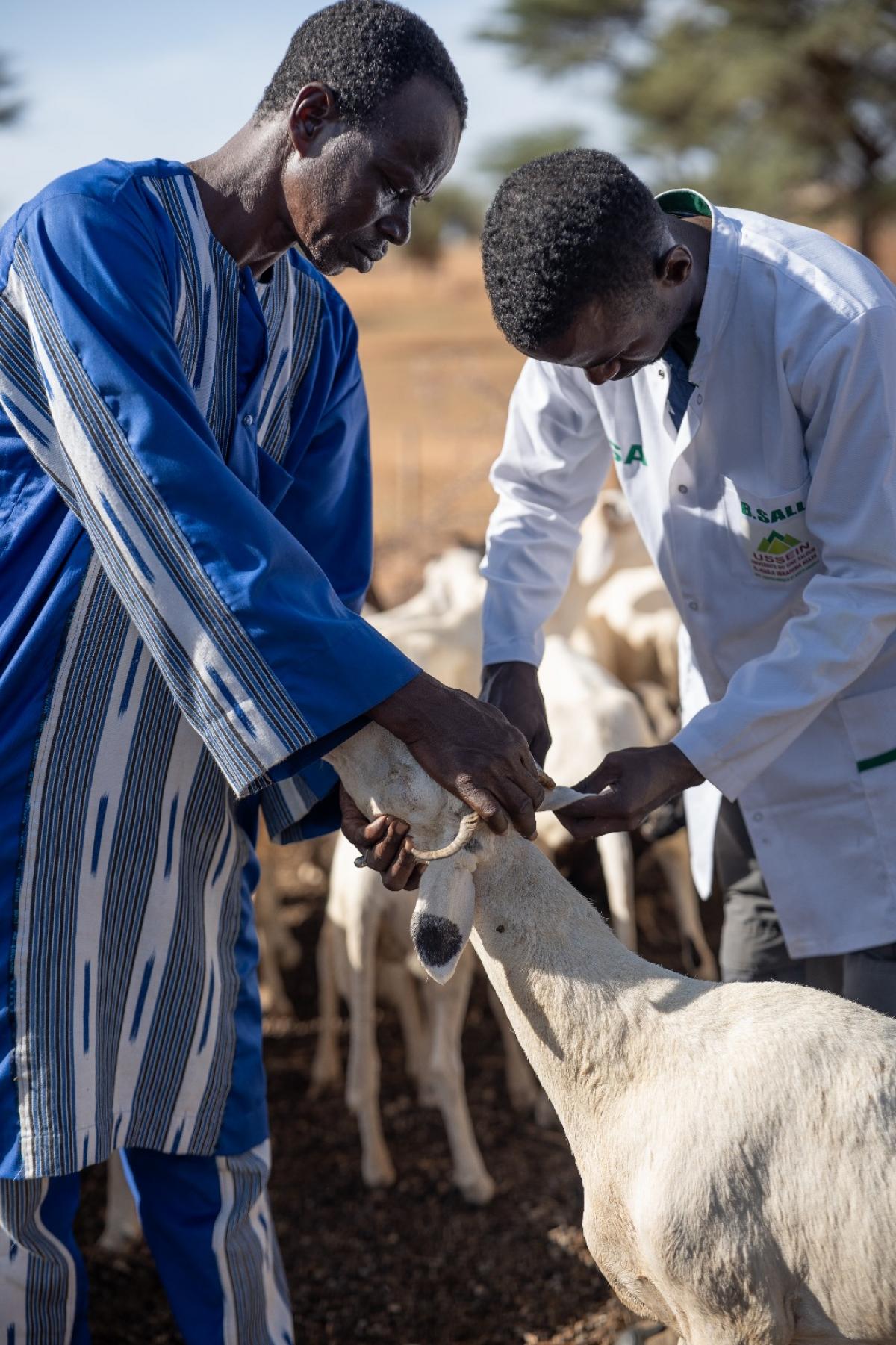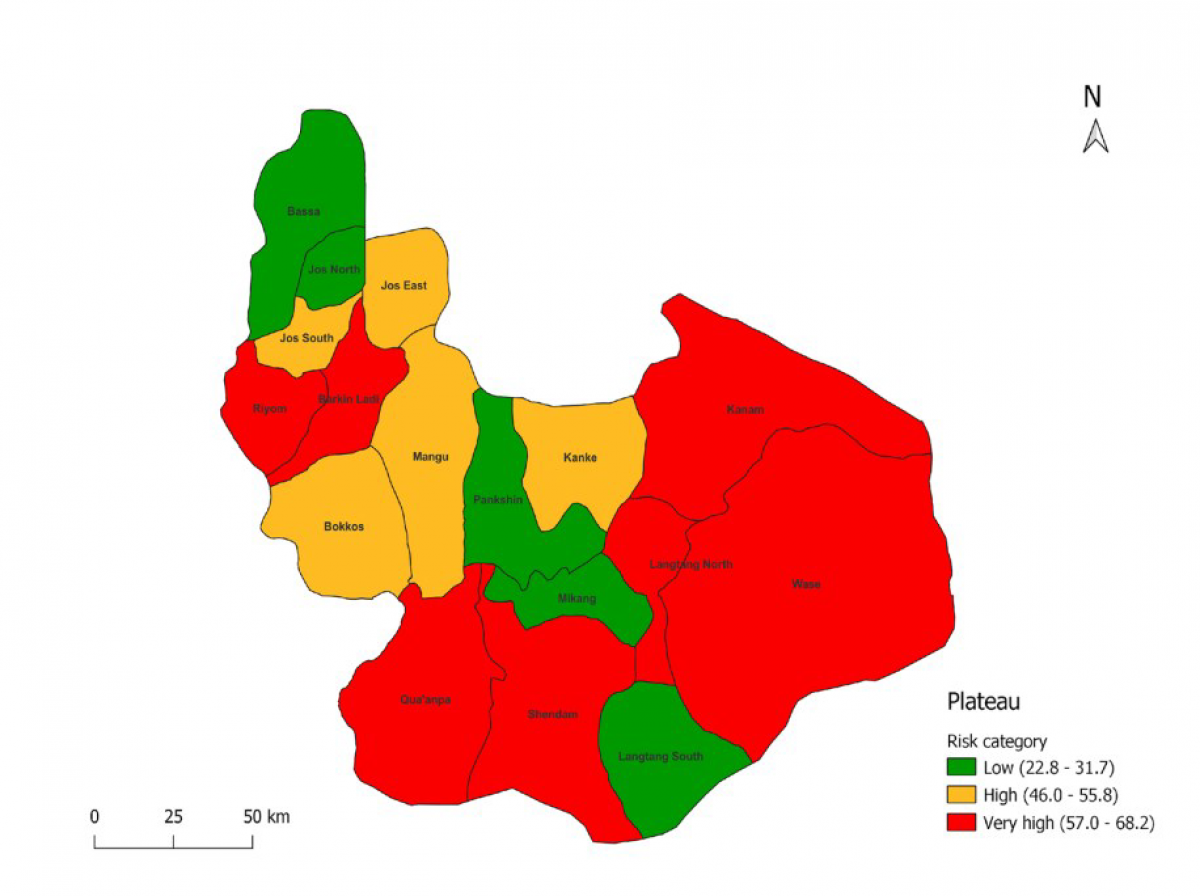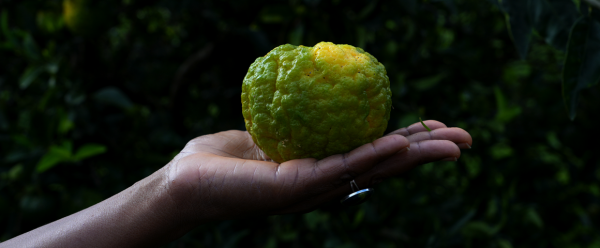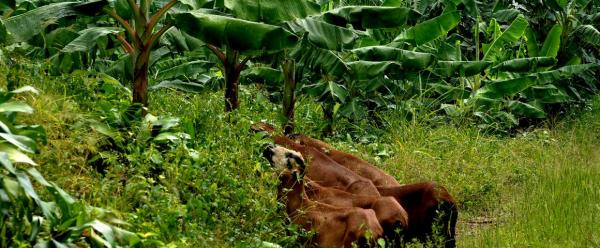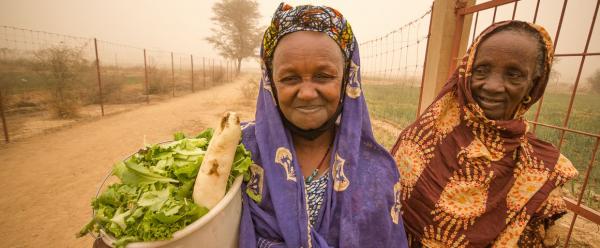Science at work 16 December 2025
- Home
- CIRAD news
- News
- Eradicating peste des petits ruminants
Peste des petits ruminants: what use is a reference laboratory?
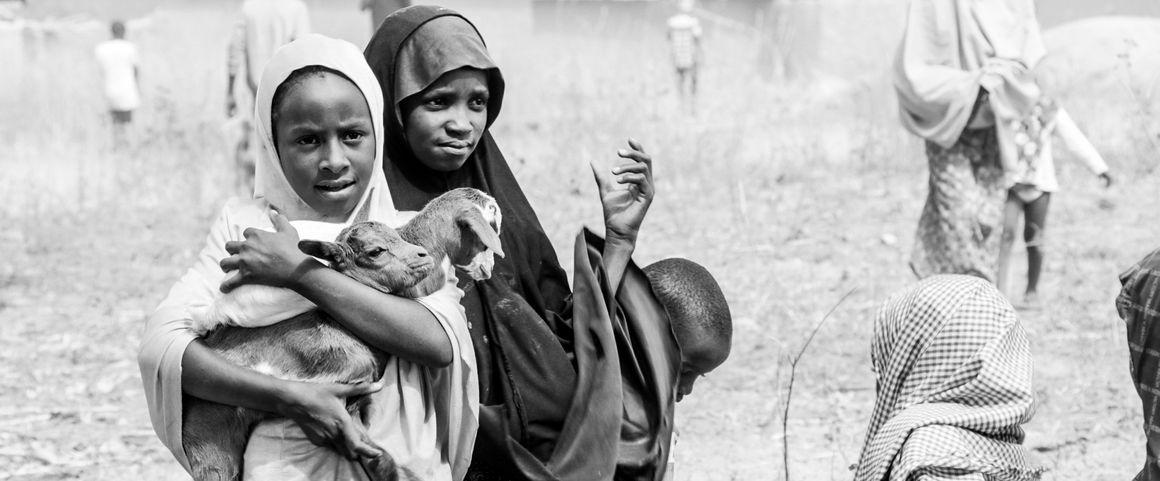
Enfants s'occupant de leurs chevreaux dans le nord du Nigéria © LIDISKI-Gbenga Ariyo
The essentials
- Peste des petits ruminants is a threat to food security in many rural parts of Africa, the Middle East and Asia. Recent emergence events in Europe and elsewhere have necessitated mass culls and caused substantial economic losses.
- CIRAD is working on several levels, from advanced research to grassroots operations: detecting emergence events, making diagnoses, tracing and modelling how the disease spreads, and optimizing vaccination strategies.
- The disease is being targeted by a global eradication programme, centring on scientific collaboration and cooperation networks involving the entire range of stakeholders from the animal health sector and sheep and goat value chains, from a local to an international level.
To mark its centenary, the World Organisation for Animal Health (WOAH) has published a special edition of its Scientific and Technical Review. As a WOAH reference laboratory for PPR and rinderpest, CIRAD is co-author of a chapter on the two diseases. The text sets out the actions required to eradicate PPR and prevent the re-emergence of rinderpest. We look at what being a "reference laboratory" entails.
A herd of goats or sheep affected by PPR can see its numbers slashed in half within a few months. The virus spreads very quickly, through simple contact with a sick animal or from absorbing contaminated secretions. There are many clinical signs, the most common being fever, fatigue, diarrhoea and weight loss. Fatality rates vary between 50 and 80 %. There is no specific treatment, but effective vaccines are available, notably developed by CIRAD.
In Africa, Asia and the Middle East, the disease is a real scourge for farmers. For the poorest rural communities, small ruminants are often a way of building savings and a vital protein source. The appearance of PPR in Greece, Romani and Bulgaria in 2024, and more recently in Hungary, shows that the disease is also a threat to the European economy. Successfully eradicating is not just a health challenge: it is an issue for the global economy, food security and poverty alleviation.
"As the WOAH Reference Laboratory for Peste des Petits Ruminants (PPR), CIRAD plays a pivotal role in advancing global efforts to combat this devastating disease. WOAH's mandate encompasses scientific excellence, technical guidance, and capacity-building to empower national veterinary services in diagnosis, surveillance, and control strategies. WOAH relies on CIRAD’s expertise, among other WOAH PPR Reference Laboratories, in advancing innovative scientific research that informs international standards and guidelines, specifically in diagnostics, vaccine development, epidemiology and field implementation aimed at PPR eradication by 2030.
CIRAD’s capacity-building efforts focus on strengthening national disease control systems and works closely with PRAPS countries to enhance post-vaccination monitoring, disease surveillance and response strategies. CIRAD also advances molecular epidemiology and PPR characterisation, supporting PPR episystem mapping for effective eradication efforts. The organisation backs the laboratory twinning program and proficiency testing to ensure collaboration and quality assurance among labs. Additionally, CIRAD plays a key leadership role in the WOAH PPR Reference Laboratory network, offering guidance and resources to improve global diagnostic capabilities and coordination in the fight against PPR.
By bridging cutting-edge research with on-the-ground action, CIRAD ensures that countries—particularly those most vulnerable—are equipped to meet global PPR eradication goals. Together, we strengthen One Health collaboration, safeguard livelihoods, and move closer to a world free of PPR."
World Organisation for Animal HealthDetecting emergence events and reacting as soon as the first signs appear
Once symptoms appear, diagnosis is the first stage in combating epidemics. PPR causes very similar symptoms to other diseases, which means that laboratory diagnoses are crucial. To this end, local veterinary services collect samples that are subsequently analysed by national laboratories. As a reference laboratory, CIRAD is regularly asked to confirm results. "In addition to confirming results, our role is to deduce how the virus was transmitted", says Arnaud Bataille, a virologist from CIRAD specializing in PPR. "The genetic analyses we do help us understand how virus strains circulate. Knowing how a disease spreads serves to stop any further spread more effectively."
Every EU country has a laboratory in charge of diagnosing PPR. There is a network of those laboratories, coordinated by CIRAD, which can test their aptitude and provide training, and ensures that information circulates smoothly. CIRAD and other international laboratories offer similar support to WOAH, which associates PPR diagnosis laboratories on a global level.
In some cases, experts from the reference laboratory are sent to assess the situation on the ground. "Farmers and then veterinary services in a given country are in the front line in the event of disease outbreaks. We must therefore be in a position to offer them rapid response protocols and recommendations that allow for the local context." Arnaud Bataille recently went to Romania, Greece and Bulgaria, where PPR emergence events had occurred on livestock farms. Visiting infected farms and talking to farmers serves to improve control measures and learn more about disease transmission.
Towards a vaccine that can differentiate between vaccinated and infected animals
PPR vaccines already exist and are used to protect farms in several countries. However, campaigns can prove expensive for the governments of those countries, for which it is also difficult to reach certain isolated farming communities. As part of the LIDISKI project in Nigeria, funded by the EU DeSIRA, CIRAD and its partners are analysing disease distribution and its socioeconomic determinants, to help veterinary services roll out bespoke vaccination strategies for each context.
Other regions, such as the EU, have different issues. In the event of PPR emergence on a farm, the rule is to slaughter the entire herd to stop the disease from spreading as soon as possible. The same strategy is also applied to other livestock diseases, such as avian influenza on poultry farms. This policy was adopted for both health and economic reasons: there are not currently any PPR vaccines that can distinguish between infected and vaccinated animals. To prevent any risk of contagion, countries may decide to ban sales of animals or meat from countries that vaccinate livestock. Choosing to vaccinate herds may therefore have a negative impact on livestock value chains for several years. This is often the last-chance option, if there is no other way of preventing the disease from spreading. CIRAD is currently working on a vaccine that could differentiate between vaccinated and infected animals, thus offering an alternative to culling.
Modelling to anticipate risks
Modelling tools serve both to identify the regions most at risk of disease spread and to suggest scenarios based on different vaccination strategies. CIRAD is using modelling for several animal diseases: PPR, heartwater, Rift Valley fever and trypanosomiasis.
This type of map, for example, is based on a model that assesses the risk of PPR transmission using data gathered in the field and from animal health players (livestock farmers, private and public veterinary services, etc). In particular, this serves to identify the zones most at risk (shown in red), and to focus prevention and control measures on those zones.
Relying on communities
Farmers, communities and local veterinary services are in the front line in the event of PPR emerging on a farm. It is therefore crucial to involve them in surveillance and control strategies. In Nigeria, again with the help of the LIDISKI project, community members have been trained to identify the disease and vaccinate animals directly. These "auxiliaries" live in isolated regions, in which a local relay is vital to guarantee a rapid response as soon as symptoms appear.
"We call this community engagement", Arnaud Bataille explains. "This means involving people, and understanding their situations, expectations and constraints in order to offer solutions that meet their needs. In some zones, it turns out that farmers would be prepared to pay for vaccines but don't know how to go about it. Public-private partnerships have been set up in several places thanks to the LIDISKI project."
Working closely with communities is also helping researchers learn more about animal movements, hence about potential virus circulation. This information will help fine-tune governments' control strategies.
Scientific and international collaborations
PPR can be eradicated, but it will take collaboration between scientists and between countries, and also with veterinary services, the private sector, and farmers. CIRAD's multidisciplinary approach and status as a reference laboratory mean it has a key role to play in these efforts.
On a scientific level, PPR expert networks are managed by FAO and WOAH. CIRAD is involved, notably in promoting regional rather than national strategies. "Borders do not stop viruses spreading", says Arnaud Bataille. "International trade and cross-border herd movements mean we can't afford to design vaccination strategies on a country scale. What we need is regional cooperation and coordination between neighbouring countries." The networks allow representatives from all fields to talk to each other and see the big picture. Vaccination strategies will therefore be seen not just from a virological point of view, but in line with disease circulation and depending on their socioeconomic impacts on farmers.
CIRAD is lucky enough to have robust, long-term collaborations with many countries and partners. When it comes to these often urgent health matters, trust and solidarity are the cornerstones of efficient information, genetic material and vaccine exchanges.
Rinderpest, which was eradicated in 2011, is relatively similar to PPR, but only affects cattle. PPR eradication schemes have partly followed the methods used previously against rinderpest, which gave good results. However, cattle farms are much easier to monitor and control than small ruminant farms, which are more often extensive and found in isolated regions that are both difficult to access and impoverished.
CIRAD is also a WOAH and FAO reference laboratory for rinderpest, and its role as regards this disease is to be on standby in case of its re-emergence. Vaccine stocks are always available and supplied at the express request of WOAH and FAO.
Reference
Bataille Arnaud, Baron Michael D.. 2024. Rinderpest and peste des petits ruminants: State of play in disease eradication efforts. World Organisation for Animal Health Scientific and Technical Review, special edition: 43-52.

